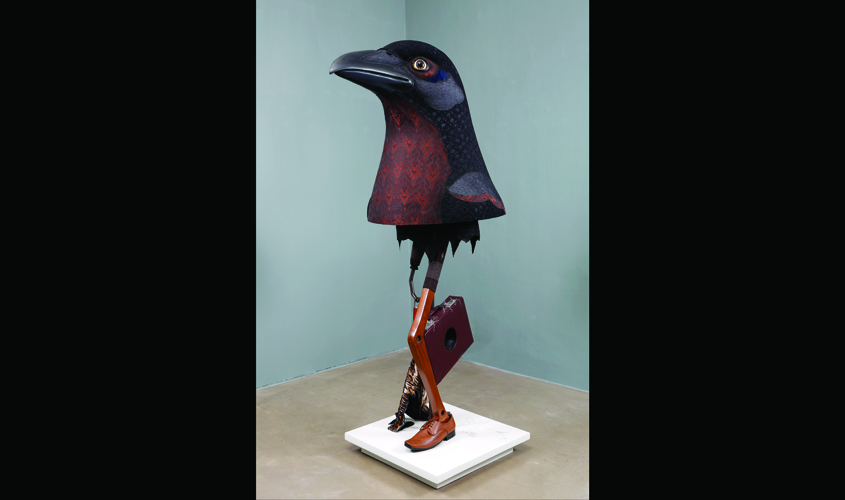Pieces of broken toys, black-and-white photographs, scraps of clothes are some of the elements that form the visual language of Jagannath Panda’s latest show, Crystal Cities, on now at Delhi’s Vadehra Art Gallery. Panda has innovatively used these elements, along with plywood and fiberglass, to make art that focuses on the idea of urbanisation, with architecture as its dominant motif. The show presents compelling artworks, such as futuristic cities somehow stranded in the past, diverse elements in a house constructed through memory, and even an object which appears like a spaceship covered in clams and shells.
When you first meet him, Panda comes across as an introvert. You assume there would be no clear answers from him. But as you start taking a walk-through with him in the gallery, you encounter his talkative side. He darts from one artwork to another and speaks quickly, often without a pause. It seems as if he wants to deliver all his thoughts to the listener at once, that if he would stop midway, he would lose the string of his thoughts. “I have been experimenting with fabrics since the past three years and have used all that I learned by myself in the show. Due to the way I have put the fabric, this work, Speedmetal, appears 3D in nature,” says Panda with childlike enthusiasm.
Through its series of 25 works, including paintings, sculptures, installation pieces and mix-media drawings, the present show can transport the viewer to a new region of urban landscape imagined by the artist.

Panda’s series, Dweller of Metropolis, comprises a set of installation pieces made with stylistically cut wooden boxes. These boxes showcase the scenes in a house through photographs, dismantled toys, wallpapers and so on. Various images—such as of old audio sets, of a balcony in a huge building where clothes are hung to dry, of an aquarium where fishes appear suspended in mid-air—are included in these boxes. “I wanted to represent what home means to different individuals,” says Panda. “I have tried to merge a sense of the outside with that of within. I like the idea of a personal space because an individual is the sole in-charge of it.”
The artist is showcasing his works after a period of seven years in Delhi. During this time, he was part of various group shows in the country and of solo shows internationally.
“I wanted to give a theatrical rendering to this piece,” says Panda. “I also wanted to convey that there is no sense of identity of a person in a city.”
On being asked why I couldn’t find enough newspaper articles on him despite his prominent presence on both the international and national art circuits, Panda says, “I was just too engrossed in my work and I thought if I am a true artist someone someday will definitely write about my work. I just didn’t seek out anyone to do so.”
We now move towards his artwork Metropolis, which is a sculpture representing a golf course. There is a presence of plastic grass and tower like structures with dismantled toys on the surface, but when you look underneath, there appears a city bustling with life, with many plastic toys underneath.
There is also a seven-foot-high (approximately) sculpture in the show depicted in yellow light in a dark room at the end of the gallery titled The Profiteer. The artwork showcases the bust of a Brahminy Kite—a bird of prey usually found roving around the banks of Lake Chilka in Odisha state, the birth place of the artist. The bust is supported by two wooden legs, and is attached to a hook-like arm, carrying a suitcase which has a hole in it. Around one of the legs, a piece of cloth that looks like tiger skin is loosely tied. Panda says, “I wanted to represent a human being who was once mighty like the bird but now is slowly facing decay being in the city, where greed has overpowered him.” The structure reflects the fading of man-bird’s pride with the slipping tiger skin from his or its body.

“I wanted to give a theatrical rendering to this piece,” says Panda. “I also wanted to convey that there is no sense of identity of a person in a city. There is a map at the surface here which represents land distribution which is quite fragile nowadays. The city, which gives dreams to many, also represents an inescapable sense of fragility of human life.”
The exhibition will be on view at Vadehra Art Gallery till 12 September, and will travel to the Bhau Daji Lad Museum in Mumbai, where it will be on view from 27 September to 29 October
- Advertisement -

